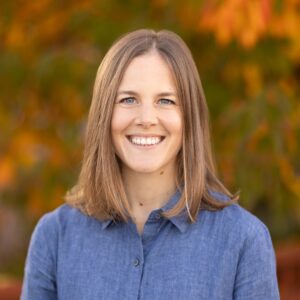At Stanford I have pursued a joint MBA and MS in Environment, focusing on sustainable food. The joint degree is a popular one, bringing together students who are committed to tackling climate change and protecting our environment. My classmates include the founder of a unicorn battery startup, a wildlife conservationist who rescued sea turtles in Panama, and an investor at Bill Gates’ climate fund.
Introduction
I came to Stanford wondering how we can build a sustainable food system, from soil to shelf. Before Stanford I was Head of Strategy & Business Planning at ICA, Sweden’s market-leading grocery chain. ICA is an industry leader in sustainability, yet as responsible for the company’s KPI process, I was astonished by the disconnect between our sales targets and the ecosystems that produce our food. I began to ask myself: Where is the link between fish sales and fish stocks? Where is the link between milk sales and methane emissions? Where is the link between palm oil sales and the drainage of carbon-rich peat soils? Is there a way to bring economy and ecology back together? These are the questions that brought me to Stanford. When I applied to The Sweden-America Foundation, I told you about wanting to become the Chief Sustainability Officer at a big grocery company, and how a Stanford education would equip me for that career. Three years later, I reflect on a learning experience that far surpassed my hopes. Let me tell you how.
Program of study
At Stanford I have pursued a joint MBA and MS in Environment, focusing on sustainable food. The joint degree is a popular one, bringing together students who are committed to tackling climate change and protecting our environment. My classmates include the founder of a unicorn battery startup, a wildlife conservationist who rescued sea turtles in Panama, and an investor at Bill Gates’ climate fund. We meet inside and outside the classroom, exchanging knowledge and pitching ideas. During the three-year program, we take courses concurrently in the Graduate School of Business and the School of Earth, allowing us to integrate scientific knowledge with business practice. The program has allowed me to explore different parts of the food system through both theory and practice. Here are five lessons:
Lesson 1: Sustainable agriculture
Theory: The courses Feeding Nine Billion and World Food Economy taught me what is required to feed the world within planetary boundaries. On the demand side, we need to shift to plant-rich diets and move consumption from beef to lower-impact meats like chicken and pork. On the supply side, we need productivity increases that exceed anything we have seen in agricultural history. We need to cut food waste along the entire supply chain, from farm to fridge. And we need to link all of these efforts, which together will reduce the land area needed for agriculture, to strong protections of remaining forests and peatlands.
Practice: As a part-time job during the school year, I built a financial model for a nonprofit that helps farmers transition to sustainable agriculture. For the model to be accurate I had to understand everything from crop yields to market prices and fertilizer costs. I also had to account for the impacts of climate change on agriculture, including more frequent storms and droughts, and more serious pest outbreaks. The result was a novel tool that is already being used by the nonprofit to finance sustainable agriculture.
Takeaway: Solutions start with science. I now feel better prepared to judge and prioritize sustainability interventions based on research and data. And when I need scientific advice in the future, I now have established relationships with leading professors and practitioners that I can reach out to.
Lesson 2: Sustainable fish and seafood
Theory: The course Environmental Economics showed me how economic theory clearly predicts that overfishing will happen in the absence of corrective policies. But while economic models succeed in identifying the problem, they are not enough to design effective solutions. While tradable fishing quotas have been lauded as the most intellectually sophisticated solution, they risk crowding out traditional, small-scale fishing in favor of big international fishing corporations. To be successful, fishing policies must combine environmental and social stewardship.
Practice: I have recently been helping a classmate who is launching a startup in cultivated seafood. Cultivated seafood tastes the same as their wild and farmed counterparts, which is an advantage compared to plant-based alternatives. And affordable cultivated seafood is finally becoming realistic thanks to decreasing costs. You might think Silicon Valley is all about semiconductors and apps, but the food tech scene here is thriving, fueled by the local giant in alternative proteins: Impossible Foods.
Takeaway: Sustainable food systems will require a multitude of solutions. We will continue to eat real fish and seafood, and it must be sustainably caught or farmed. But we will also increasingly rely on alternatives, both cultivated and plant-based. With a growing global population and growing environmental challenges, there is not one fix—we must give it everything we’ve got.
Lesson 3: Measuring environmental impact
Theory: The course Life Cycle Assessment for Complex Systems taught me how to quantify a product’s environmental footprint. I had several aha moments in class, including discovering that single-use cutlery made out of potatoes or corn can cause more environmental damage than cutlery made out of plastic. In sum: sound environmental decisions rely on systematic measurement and modeling.
Practice: I partnered with an organic dairy producer to measure the greenhouse gas emissions of a package of milk. The producer is committed to becoming net zero and is making heavy investments to that end. My work included setting up a model in a Life Cycle Analysis software, collecting data from the dairy operations, and identifying the greatest opportunities for cutting greenhouse gas emissions. As a result, the producer is now installing modern technology to reduce emissions from manure, and changing the composition of feed to reduce emissions from enteric fermentation.
Takeaways: What gets measured gets managed. The next decade will see a revolution in environmental measurements, spurred by government policies and corporate climate pledges. As an executive, I will be able to set measurable environmental goals and manage towards them in a data-driven way.
Lesson 4: Leveraging artificial intelligence
Theory: Recent advances in AI will be critical in building sustainable food systems. We need people who can deploy AI effectively, identifying meaningful use cases that go beyond the hype. For that reason I have taken six quarters of computer science, with courses covering machine learning, deep learning, remote sensing and natural language processing, to name a few areas. These techniques can be used to optimize farm operations, reduce food waste, reduce the environmental impacts of aquaculture, make smallholder farmers more climate resilient, and more.
Practice: Together with two classmates, I programmed autonomous robots to clean up plastics from the ocean. For the robots’ navigation system, we used a machine learning approach called reinforcement learning. We battled with robots that went around in circles and scratched our heads over modeling ocean currents. In the end, I learned a ton about translating AI theory into practice.
Takeaways: The speed and scale required to transform our food system make AI a critical enabler. As a leader in sustainability, the technical knowledge I have built at Stanford makes me better positioned to identify the opportunities for AI, and avoid the traps.


With my classmates Stanford’s campus
Finally, a lesson from nature
During my time at Stanford, I have had the fortune to visit ten national parks across the U.S. Beyond the joys of hiking and biking in spectacular environments, these trips have inspired me to think creatively about sustainable food systems. Sometimes the lessons show up in surprising ways: In Yellowstone, the world’s oldest national park, bison and grasslands engage in a reciprocal relationship. The bison roam from one place to the next, eating just enough grass to stimulate more growth before moving on. Without the bison, Yellowstone would not be as green, and the grass would not be as nutritious. The bison are not just moving to find the best food, they are creating the best food by the way they consume. As someone who reads a lot about the environmental damages of food, it was striking to see a way of harvesting that is not extractive. You would be forgiven for viewing this as a far-fetched metaphor without any practical applications. But that is wrong: rotational grazing is increasingly used in meat and dairy production, by which the animals are moved between paddocks in ways that improve environmental outcomes and reduce costs. It is a reminder that solutions for sustainable food systems will come from a diversity of sources, from technological breakthroughs to insights from the natural world.

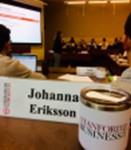
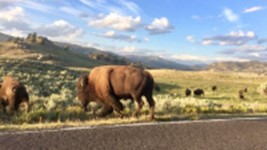
Football game In class Bison in Yellowstone National Park

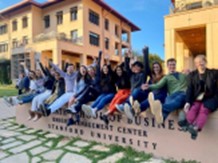
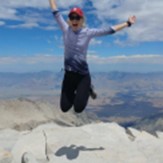
Hanging out with friends Wildfire smoke in San Francisco Mount Whitney 4421m
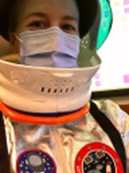
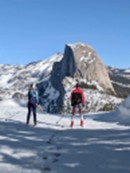
Halloween in class Skiing in Yosemite
Thank you, Sweden-America Foundation
Your financial support has allowed me to pursue a unique graduate program that doesn’t exist anywhere else in the world: a highly competitive MBA combined with an MS in Environment, focused on sustainable food. Your fellowship made it possible for me to graduate debt-free, able to choose a job that maximizes impact rather than salary. Our planet will be better off as a result. Thank you.

